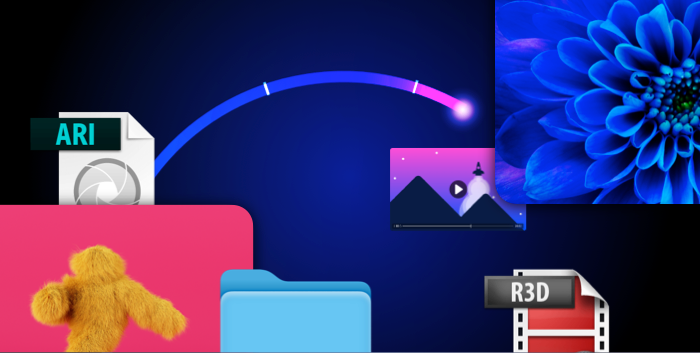
Still paying too much for cloud storage?
Storj is an enterprise-grade, decentralized cloud storage solution with costs that are a fraction of AWS S3. Our S3 compatibility makes it quick and easy to switch from a centralized storage service to the low costs, high resiliency, zero-trust security, and high-speed massive parallelism of Storj.
If you're going to introduce a new service into your technology stack, you need to do diligence testing or a proof of concept. But that's hard if you can't figure out how to integrate it. Storj is S3-compatible, so integration is easy.
Developers don’t need to learn anything new. In many cases, it takes as little as a few minutes to simply change your endpoint and credentials to start test driving the benefits of decentralized cloud storage.
A completely new model for cloud storage
Getting cloud storage for a fraction of the price of legacy cloud storage from AWS, Azure or GCP probably makes you think that you’d have to sacrifice security or performance.
Traditionally, low-cost storage meant that it was slow, insecure or both. Why is that?
Data centers and storage are extremely expensive to build and operate. Amazon, Microsoft and Google have to factor those costs into the prices they charge their customers.
But what if there was a different way? That was the vision when Storj was founded eight years ago. Most hard drives on the planet are underused. About 75% of them are using less than 20% of their capacity.
If there was a way to leverage these resources, you could remove the expense of building and operating a data center and pass the savings on to customers.
Sound familiar? It’s like AirBnB or Uber but for cloud storage.
For storage, we charge just $4 per TB per month. And that includes all of the security and performance features that we’ll share with you in a minute. We don’t have tiers or hidden fees.
For comparable storage at AWS, you’d pay $23. So, right there, you’re saving over 80%.
Then, when it comes to transferring files, we charge $7 per TB versus Amazon’s $90, so here you’d save over 90%.
In just about any scenario, you can save at least 80-90% and you can try it out and get 25 GB of storage for free.
Better than enterprise-grade
Storj is using unused space on thousands of drives all around the world. We can’t necessarily trust all of them. Some might go offline, for example.
Our solution had to be built so that it didn’t require trust. The zero-trust architecture makes worries like data breaches and ransomware attacks a thing of the past and is being recommended by industry analysts.
When storage is centralized, the compromise of a single entity, such as a user device or a storage system, can potentially put data at risk. Our decentralized storage architecture removes this risk.
And with parallel uploads and downloads from nodes globally, it’s fast.
How do we do it?
First, every file and its metadata is encrypted. You control the encryption keys. Only you and those you grant permissions can access your data.
Next, we split up the data using a technique called erasure coding. It’s the same technology used on DVDs and in satellites. Every file is split into at least 80 pieces and then each of those 80 pieces is stored on a different drive, run by a different person, on a different network, with different power supplies, and in a different geography.
The size of the file determines how many pieces there will be. For every 64 MBs of a file, 80 pieces are ultimately stored on the network. So, for a file less than 64 MBs there will be 80 pieces but a file of 100 MB will have 160 pieces on the network.
The combination of the encryption and the distributed storage makes the system extremely secure.
So, at this point, your data has been encrypted, split into little pieces and distributed around the world. Let’s look at what happens when you need to retrieve it.
The way that erasure coding works, any 29 of the 80 pieces we mentioned can be used to put the file back together. At Storj, this means a couple of things.
First, it helps to ensure durability. In fact, no disaster, outage, bad actor, or misconfigured server can corrupt your data, because of built-in multi-region redundancy. We provide 11 9s of durability. This is the same level of durability as all of the major cloud storage providers.
It also helps with performance. Files are downloaded from 35 nodes on Storj and then stopped when the first 29 are retrieved. Over 15,000 nodes around the world operate in unison to ensure low latency and high throughput no matter where your data is being downloaded from.
We’ve built our solution to be an enterprise-grade, low cost alternative to legacy cloud storage options. In over three years of operations, we’ve never had a single file lost, hacked, or corrupted.
Put us to the test
We’ve worked hard to make life easy for developers. Integration is easy with our S3 compatibility, open-source transparency, and our global developer community.
Our library of documentation provides step-by-step details including how easy it is and you can start for free with 25 GB of storage.
For additional details, visit Storj.io or check out a replay of our webinar where we show step-by-step how to migrate from AWS to Storj.

















